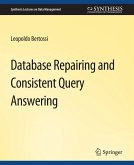Query compilation is the problem of translating user requests formulated over purely conceptual and domain specific ways of understanding data, commonly called logical designs, to efficient executable programs called query plans. Such plans access various concrete data sources through their low-level often iterator-based interfaces. An appreciation of the concrete data sources, their interfaces and how such capabilities relate to logical design is commonly called a physical design. This book is an introduction to the fundamental methods underlying database technology that solves the problem of query compilation. The methods are presented in terms of first-order logic which serves as the vehicle for specifying physical design, expressing user requests and query plans, and understanding how query plans implement user requests. Table of Contents: Introduction / Logical Design and User Queries / Basic Physical Design and Query Plans / On Practical Physical Design / Query Compilation and Plan Synthesis / Updating Data
Dieser Download kann aus rechtlichen Gründen nur mit Rechnungsadresse in A, B, BG, CY, CZ, D, DK, EW, E, FIN, F, GR, HR, H, IRL, I, LT, L, LR, M, NL, PL, P, R, S, SLO, SK ausgeliefert werden.









